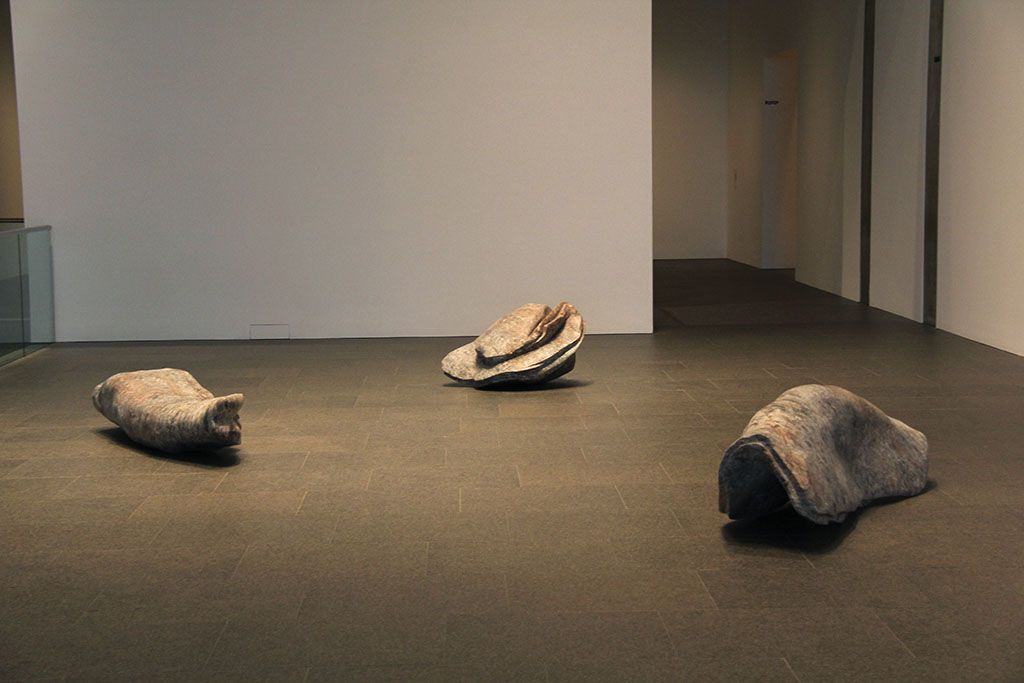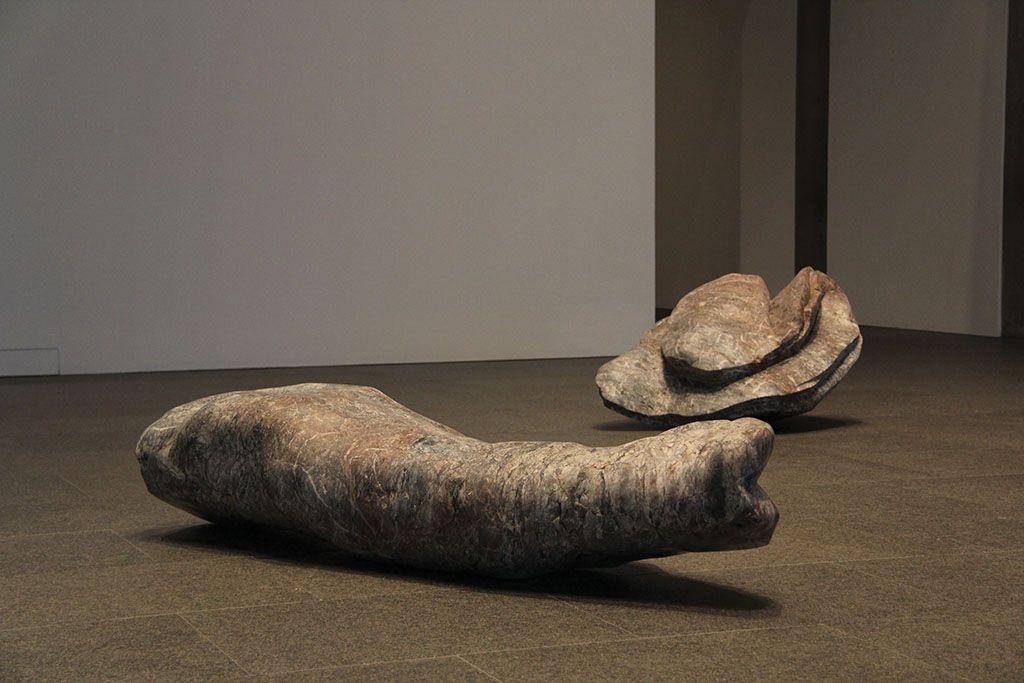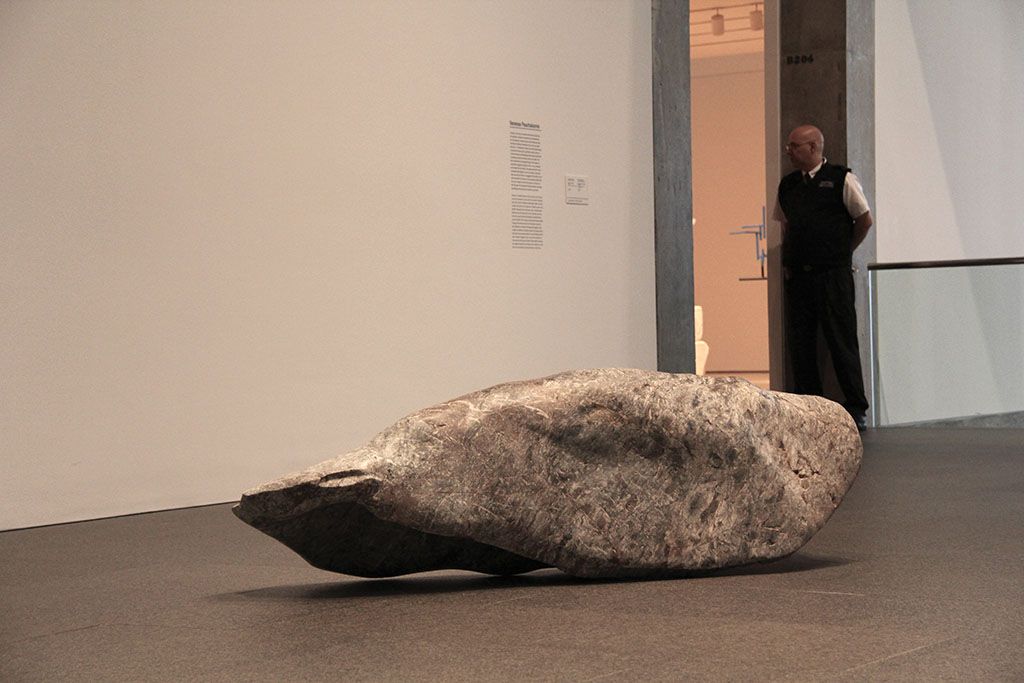Regarding my work Shadows for Humans at the National Gallery of Canada.
see also: Shine a Light and Shadows for Humans.
Point 1: Sculpture
Sculpture is a medium that allows you to have a one on one experience with an object. It is about experience as opposed to information. The three components of Shadows for Humans are installed directly on the ground. There is no pedestal or glass case that separates you from the sculpture. It is part of real space, the same space that you as a viewer occupy. Because of this you have to engage very differently with a floor bound sculpture then with a painting on the wall for example. Your own physicality is part of the experience of a sculpture.
Point 2: Scale
The work Shadows for Humans works on a one to one scale with the viewer. Scale is an important issue in regard to sculpture. If you have a figurative work, a life-size figure that is on the floor opens up for a very different relationship then a small-scale figurine, that is on top of a pedestal. With this sculpture I want you to first connect on a very physical level with these objects because then, you have to try and figure out what the material might be and how it relates to the human body. You will start to “feel” your way around the work before you start wondering why these objects with this specific title came into existence. They are made to be viewed in this neutral gallery space in order for the viewer to establish a relationship.
Point 3: Abstract is not Abstract
These works are not abstract, just because you can’t define an image. In fact, they are not abstractions of known forms, but inventions of sorts, they are made to look like something else. So it would be better to call them amorphous forms. Abstraction is a term that is often misused, because it is used as a synonym for everything that is not recognizable as an image. However, there are different levels of expression possible within the world of sculpture. This is the exciting part of “creating” form that you are responsible for as a maker.
Point 4: Shadows
Most people seem to think that shadows are something two-dimensional. I don’t agree with that. I think shadows are three-dimensional. They come into existence when a body, an object obscures light. They inhabit a three-dimensional space and are our most direct confirmation of “being here”. Usually they are referred to as something negative, the other side of things, the dark side, but shadow protects from too much sun and it occurs only during the positive encounter of light. Shadows are more true to reality then a reflection, because they don’t turn things around. But they obscure things, distort a shape. So in this sense, I created shadows out of a marble, that looks like a dark matter, grayish, meat-like, in a surface that is like a worn skin. The shapes shadow you, as you start walking among them. A relationship starts.
Point 5: Stone as artistic medium
Stone is usually referred to as a traditional medium but you don’t see it much in North America in contemporary art. It is a medium that demands skill and labour and in turn will reward you with the possibility of receiving a durable object with a strong presence. You can create form. This is a kind of power and a heavy responsibility. Today, I feel I have a lot of advantages with this material, because most people don’t even recognize it as they don’t expect it in contemporary work. So it is a medium with many possibilities for me, especially when you start to use the many different colours of marble that are available.





